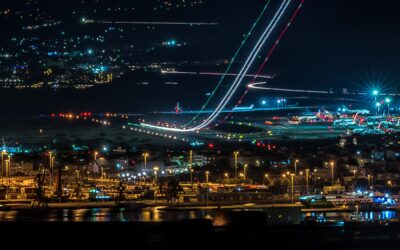
CPL (A) – Commercial pilot license
Scope of authorisation
As the pilot in command, aircraft that are categorised as single pilot aircraft may be flown in the commercial sector. These are usually aircraft up to 5.7 tons, which are propeller driven.
The CPL (A) license includes the following privileges in detail:
- Activity as a private pilot PPL (A)
- In non-commercial aviation for a professional activity as a responsible pilot or as a second pilot on aircraft of the types registered in the aircraft certificate
- In commercial air traffic to work as a responsible pilot on aircraft of the type entered in the pilot’s license, which are approved for a minimum crew consisting of one pilot (SPA Single Pilot Aircraft)
- In commercial air traffic to work as a second pilot on aircraft of the type entered in the pilot’s license (SPA Single Pilot Aircraft and MPA Multi Pilot Aircraft)
Requirements for the training
- 150 flight hours, including 50 hours as PIC in airplanes
- 10 h PIC cross-country flight including a flight of 540 km (300NM) with two stopovers until a complete standstill
- PPL(A) with night flight rating (if not on the PPL, the CPL(A) training is extended by 5h NVFR training)
The rights of CPL-A may only be exercised under VFR conditions without an additional IR rating.

Course of training
There is a theoretical and a practial part of the training:
Theory
The theoretical CPL-A training consists of 270 hours, at least 60 hours of which are brush-up lessons. Furthermore, the theoretical training takes place via distance learning via our partner, Cranfield Aviation Training School (Deutschland) GmbH in Dortmund. The dates for the necessary lessons can be found here.
As a rule, we recommend that our students conduct ATPL theory training via distance learning. The academic level between ATPL and CPL is identical and the ATPL includes both IR (Instrument Rating) and HPA (High Performance) theory. When building up from CPL-A/IR to ATPL-A at a later date, the training and examination must be virtually completely repeated.
The theoretical examination can be taken at any EASA examination authority (e.g. at the LBA in Braunschweig, Austro Control etc.). The exam can be written in 6 partial exams, with 4 attempts per subject.
Practice
The practical training includes at least 25 flight hours with a flight instructor incl. 10 hours of training by instruments. Of this, 5 hours can be completed on a BITD, FMPT I or FTD II simulator. If a valid IR-A is available, the training is reduced to 15 flight hours with a flight instructor. With a valid IR-H the training is reduced to 20 flight hours with a flight instructor, whereby the use of the simulator is no longer possible.
If there is no night flight authorisation, the training increases by at least 5 training hours during the night. At least 5 take-offs and landings must be completed solo.
At least 5 hours of training must be flown on an aircraft that is approved for at least 4 people, has a controllable pitch propeller and is equipped with a retractable landing gear.
Revalidation of the license
The license itself is valid for a lifetime and does not need to be extended. However, as with the PPL, the class and type ratings included must be regularly extended. This also applies to any instrument flight authorisation (IR) that may be included.
Training costs
The training costs amount to approx. €12.000,00 for the complete training without taking into account a possible simplification of training or an already passed theory test. Here you will find our sample offer in connection with our current price list.
Legal bases
The legal basis results from Annex 3, Section E, of EU VO 1178/2011 and the associated accepted verification procedures (AMCs). We recommend the EASA Easy Access Document for further information.
Any questions?
The training options are diverse and our website is no substitute for personal advice. We would be happy to advise you personally, taking your individual situation into account.
Latest news from our training department
Next night flight course starts on 26.1.2023
Night flight training is an important part of a pilot's overall training. This gives pilots the necessary knowledge and skills to recognize and avoid potential hazards during night flight operations. In particular, we teach them how to operate their aircraft safely in...

